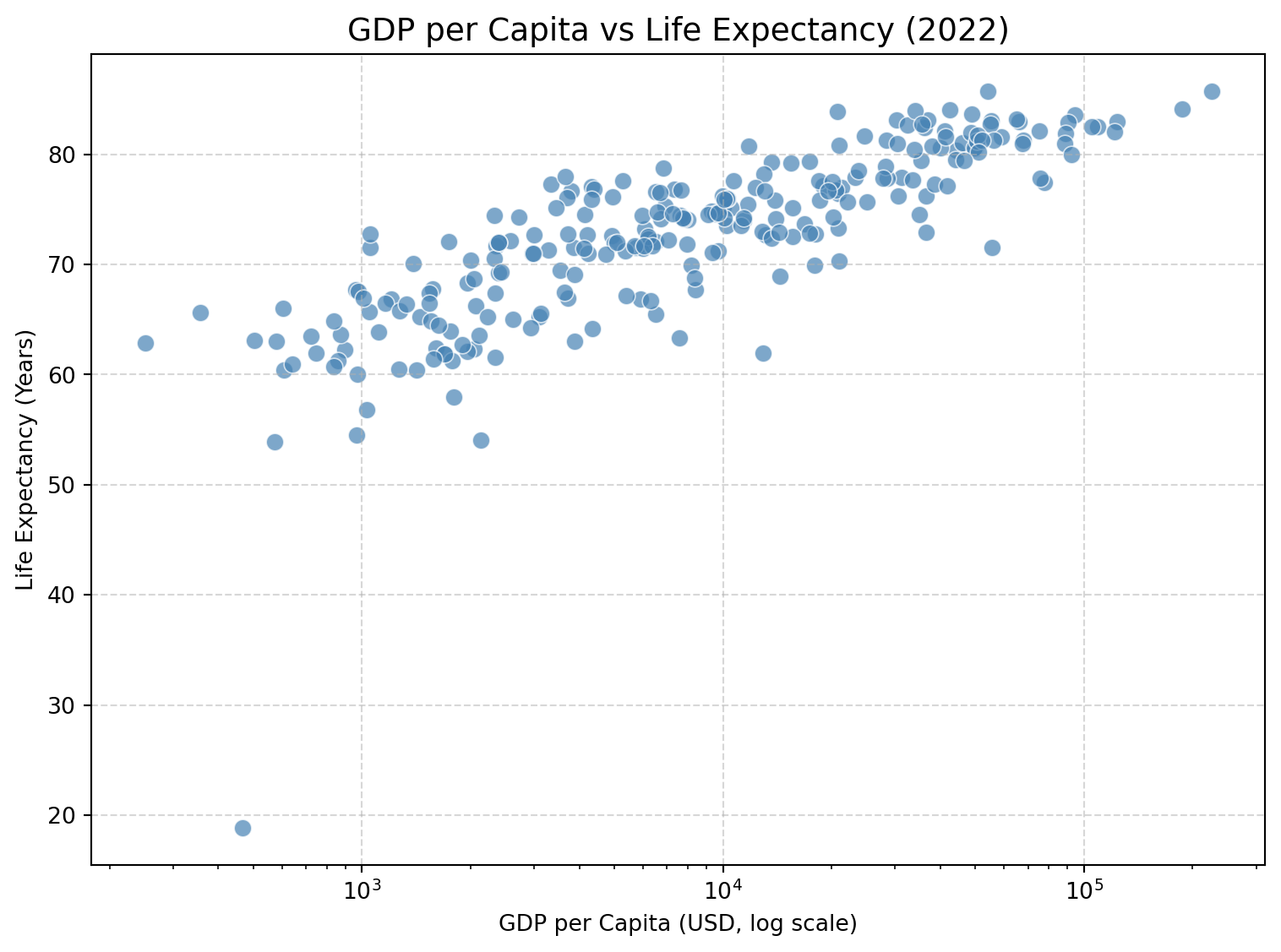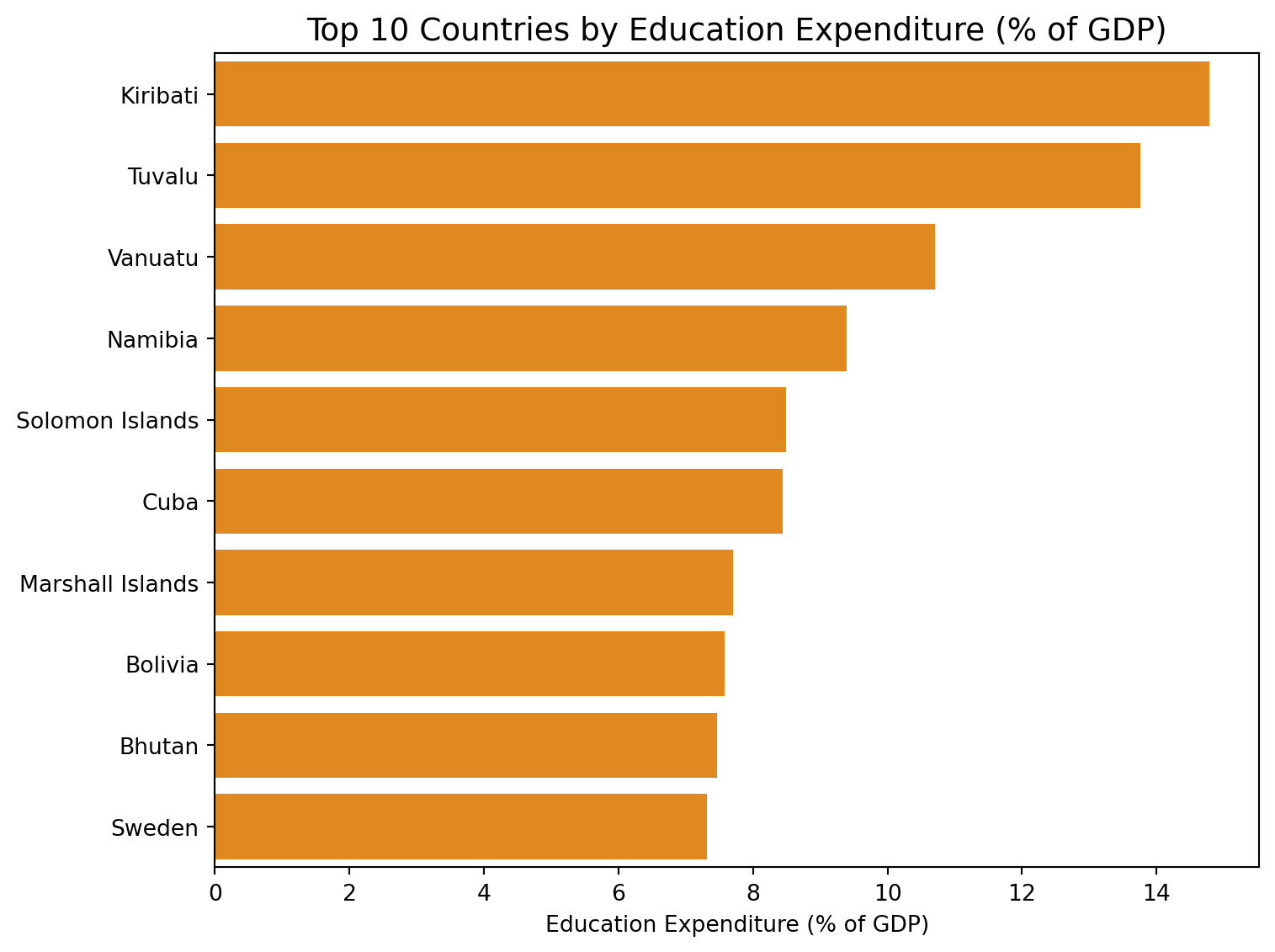| country | gdp_per_capita | life_expectancy | education_expenditure_gdp_share | |
|---|---|---|---|---|
| 0 | Zimbabwe | 2040.546587 | 62.360000 | NaN |
| 1 | Zambia | 1447.123101 | 65.279000 | 3.658841 |
| 2 | Yemen, Rep. | NaN | 67.952000 | NaN |
| 3 | West Bank and Gaza | 3799.955270 | 76.662000 | NaN |
| 4 | Virgin Islands (U.S.) | 44320.909186 | 80.319512 | NaN |
World Development Indicators 2022
2025-10-08
Overview
This presentation analyzes three global development indicators:
- GDP per capita (USD)
- Life expectancy (years)
- Education expenditure (% of GDP)
Data source: World Bank World Development Indicators (2022)
Objective: Understand economic and social development relationships.
GDP per Capita vs Life Expectancy

Top 10 Countries by Education Expenditure

Visualization observations
Countries with higher GDP per capita generally exhibit longer life expectancy, highlighting how income levels link to healthcare and living standards.
Small island nations like Kiribati, Tuvalu, and Vanuatu allocate over 10% of GDP to education — far above the global average of around 4%.
Summary Statistics
| gdp_per_capita | life_expectancy | education_expenditure_gdp_share | |
|---|---|---|---|
| count | 256.00 | 265.00 | 207.00 |
| mean | 19495.39 | 72.80 | 4.13 |
| std | 28998.00 | 7.65 | 1.90 |
| min | 250.63 | 18.82 | 0.00 |
| 25% | 2388.57 | 67.71 | 3.01 |
| 50% | 7630.92 | 73.70 | 3.82 |
| 75% | 23994.45 | 77.83 | 4.92 |
| max | 226052.00 | 85.75 | 14.79 |
Highlights:
GDP per capita: Mean ≈ $21,175, wide income disparity
Life expectancy: Mean ≈ 73 years
Education expenditure: Mean ≈ 4.26%, up to 14.8%
Interpretation:
Countries with higher GDP per capita live longer on average.
Education investment varies more than income levels.
Some low-GDP nations still allocate significant education budgets.
Indicates that human capital can be prioritized even in smaller economies.\
Conclusion:
Economic prosperity and health outcomes are strongly correlated.
Both developing and developed nations invest in education, but levels differ widely.
Sustained investment in human capital is essential for inclusive growth.
Future work: Regional analysis and policy-based comparisons.
References
World Bank (2022). World Development Indicators Database. https://databank.worldbank.org/source/world-development-indicators
UNESCO Institute for Statistics (2023). Education Expenditure as a Share of GDP. https://uis.unesco.org/en/topic/education-finance